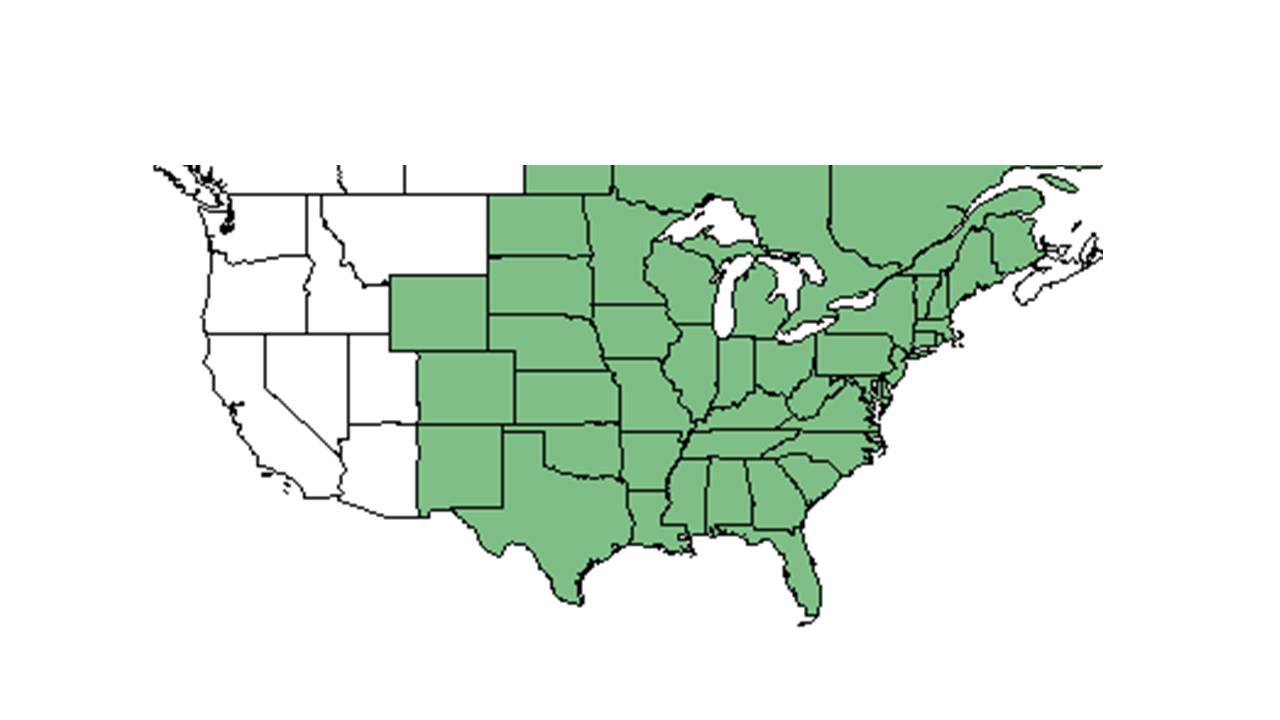Difference between revisions of "Agalinis tenuifolia"
(→References and notes) |
Krobertson (talk | contribs) |
||
| Line 18: | Line 18: | ||
}} | }} | ||
| − | |||
| − | |||
Common names: Slender Garardia; Slenderleaf False Foxglove | Common names: Slender Garardia; Slenderleaf False Foxglove | ||
Synonym names: ''A. tenuifolia'' var. ''leucanthera'' (Raf.) Pennell; ''Gerardia tenuifolia'' Vahl; ''Gerardia tenuifolia'' subsp. ''lecuanthera'' (Raf.) Pennell | Synonym names: ''A. tenuifolia'' var. ''leucanthera'' (Raf.) Pennell; ''Gerardia tenuifolia'' Vahl; ''Gerardia tenuifolia'' subsp. ''lecuanthera'' (Raf.) Pennell | ||
| + | |||
| + | ==Description== | ||
| + | <!-- Basic life history facts such as annual/perrenial, monoecious/dioecious, root morphology, seed type, etc. --> | ||
It is an annual (Hogg et al 1983 and Hall 1993). | It is an annual (Hogg et al 1983 and Hall 1993). | ||
Revision as of 17:33, 14 July 2015
| Agalinis tenuifolia | |
|---|---|
Error creating thumbnail: Unable to save thumbnail to destination
| |
| Scientific classification | |
| Kingdom: | Plantae |
| Division: | Magnoliophyta - Flowering plants |
| Class: | Magnoliopsida - Dicotyledons |
| Order: | Lamiales |
| Family: | Orobanchaceae |
| Genus: | Agalinis |
| Species: | A. tenuifolia |
| Binomial name | |
| Agalinis tenuifolia (Vahl) Raf. | |

| |
| Natural range of Agalinis tenuifolia from USDA NRCS Plants Database. | |
Common names: Slender Garardia; Slenderleaf False Foxglove
Synonym names: A. tenuifolia var. leucanthera (Raf.) Pennell; Gerardia tenuifolia Vahl; Gerardia tenuifolia subsp. lecuanthera (Raf.) Pennell
Contents
Description
It is an annual (Hogg et al 1983 and Hall 1993).
Distribution
Agalinis tenuifolia is the most widely distributed throughout eastern North America (Musselman and Mann 1978).
Ecology
This species is a vigorous parasite. It formed haustoria on all 19 commercial species included in Appendix III. No clear host preference was shown, although hardwood species supported more parasitic attachments than pine species (Musselman and Mann et al 1978).
Habitat
Agalinis tenuifolia commonly grows in disturbed sites, including clear cut areas and the edges of pine plantations. Large populations may also be found growing at the margins of ditches and in other wet or moist habitats (Musselman and Mann 1978). It can be found in undisturbed grasslands and areas with low soil nutrients (Hogg and Morton 1983). Other natural habitat includes open upland woodlands, mixed pine-hardwood stands, mesic wooded edges of limestone glades and open grassy limestone glades, scrubby floodplain woods, borders of wooded mesic hammocks, dry sandy slopes, and calcareous clearings (FSU Herbarium). It occurs on xeric limestone prairies of Illinois (Hogg et al 1983), and in moist to dry savannas and bluffs (Wunderlin and Hansen 2003). Prefers semi-shade and sandy soils including sandy loam, sandy clay, and drying or dry loamy sand (FSU Herbarium).
Phenology
It has been observed flowering September through November, and fruiting in October and November.
Seed dispersal
Seed bank and germination
Fire ecology
Pollination
Use by animals
Native vegetation, often including Agalinis tenuifolia, can be completely destroyed and replaced by weeds and soil nutrients increase dramatically when Ring-billed Gulls and other species of gulls nest from April to June (Hogg et al 1983).
Diseases and parasites
Conservation and Management
Cultivation and restoration
Photo Gallery
References and notes
Collectors: Loran C. Anderson, Wilson Baker, L. Brouillet, J. M. Canne, A. F. Clewell, Angus Gholson, Robert K. Godfrey, R. Karl, S. W. Leonard, and John C. Semple.
Florida State University Robert K. Godfrey Herbarium database. URL: http://herbarium.bio.fsu.edu. Last accessed: June 2014.
Hall, David W. Illustrated Plants of Florida and the Coastal Plain: based on the collections of Leland and Lucy Baltzell. 1993. A Maupin House Book. Gainesville. 343. Print.
Hogg, E.H. and J.K. Morton. 1983. The effects of nesting gulls on the vegetation and soil of islands in the Great Lakes. Canadian Journal of Botany 61:3240-3254.
Musselman, L.J. and W.F. Mann, Jr. 1978. Root parasites of southern forests. General Technical Report SO-20. New Orleans, LA, USDA Forest Service.
States and Counties: Florida: Calhoun, Escambia, Gadsden, Jackson, Lafayette, Leon, Levy, Liberty, Walton, Wakulla, and Washington. Georgia: Newton.
USDA NRCS Plants Database team. URL:plants.usda.gov
Wunderlin, Richard P. and Bruce F. Hansen. Guide to the Vascular Plants of Florida. Second edition. 2003. University Press of Florida: Gainesville/Tallahassee/Tampa/Boca Raton/Pensacola/Orlando/Miami/Jacksonville/Ft. Myers. 547. Print.